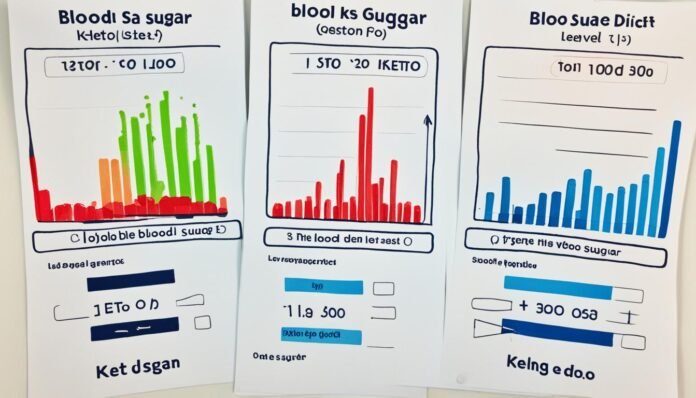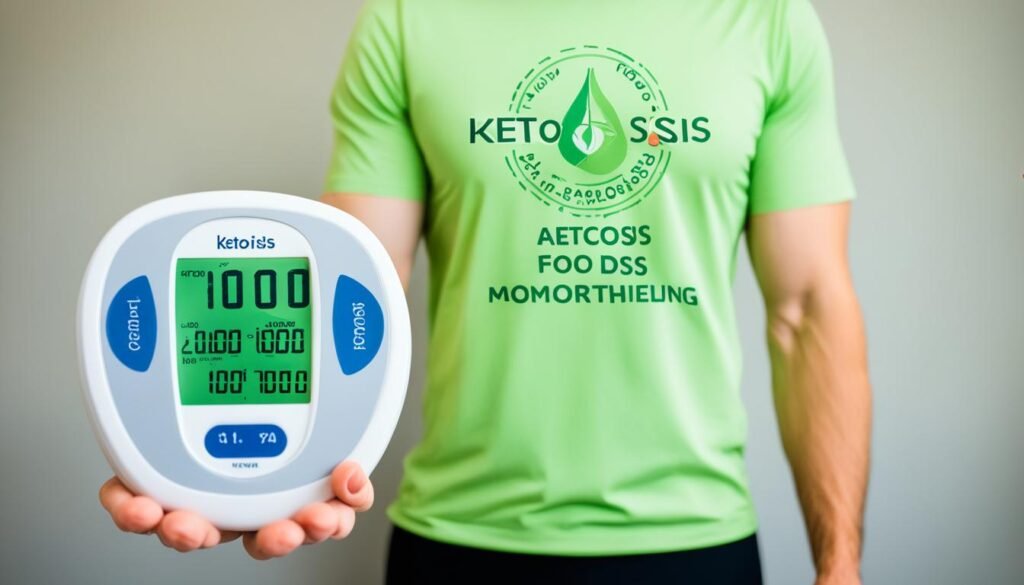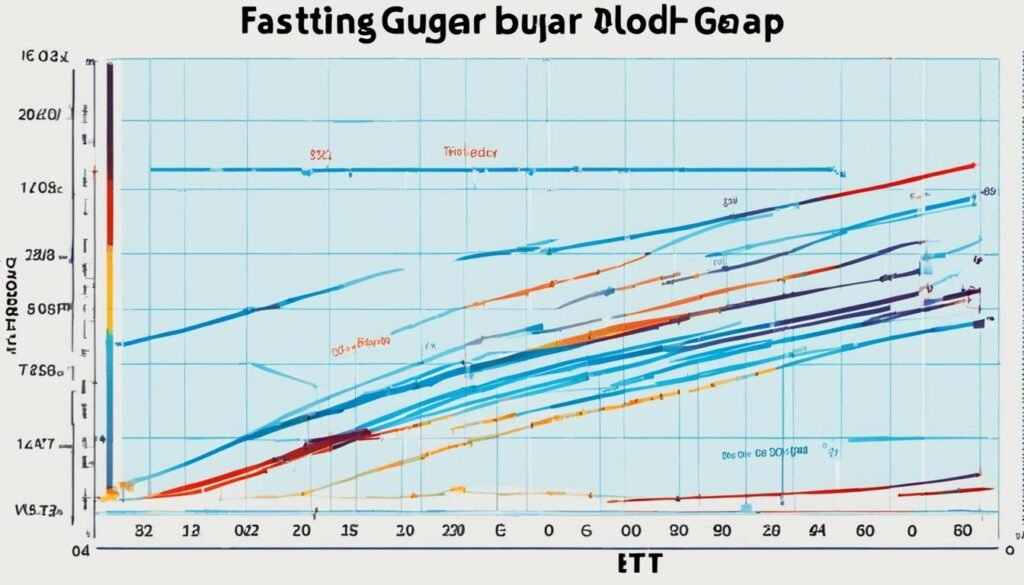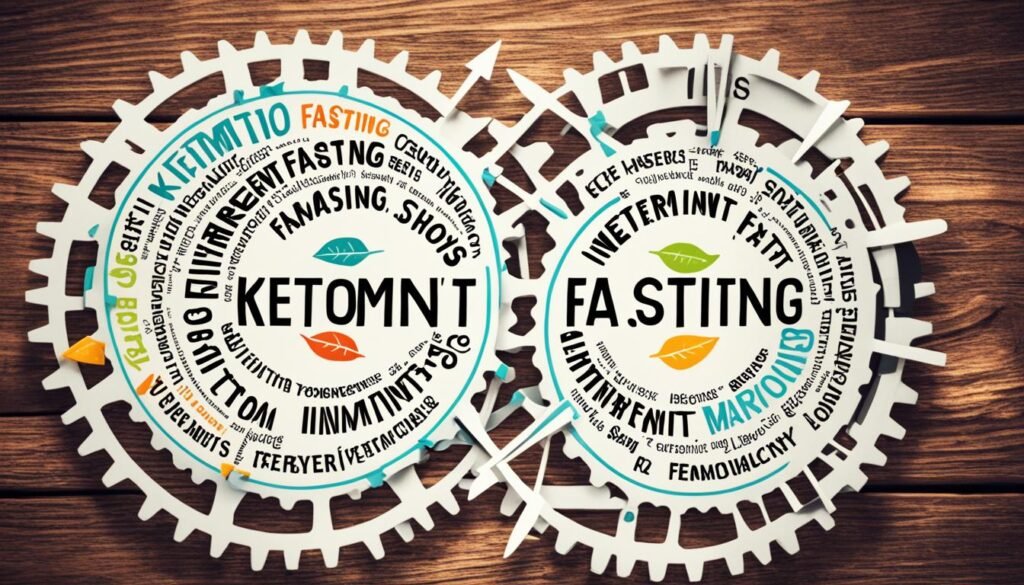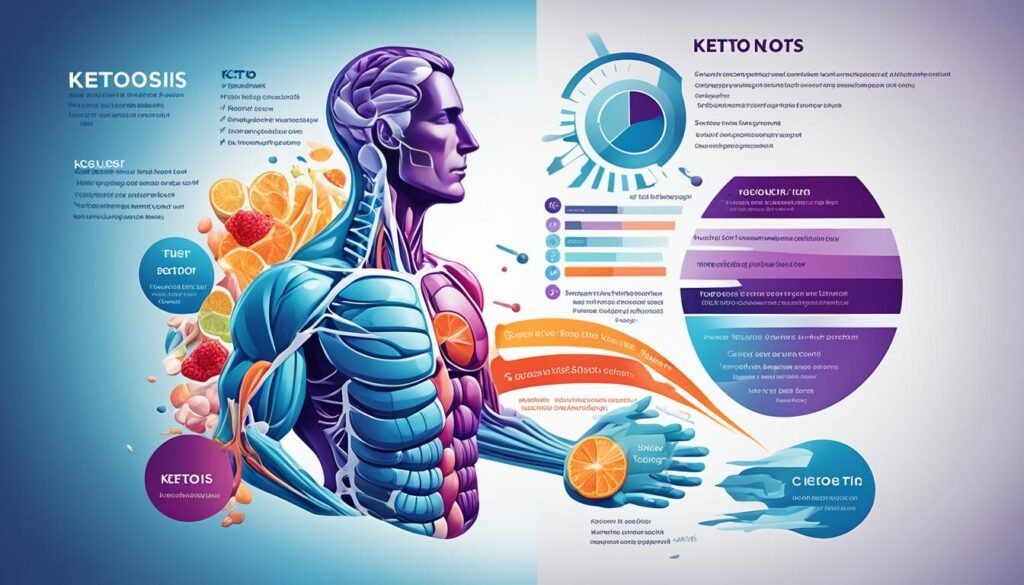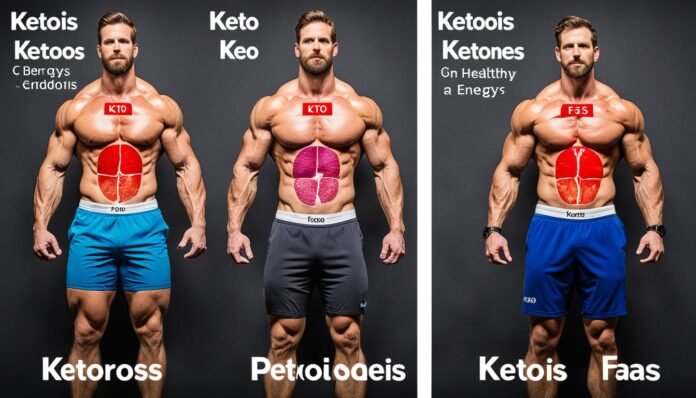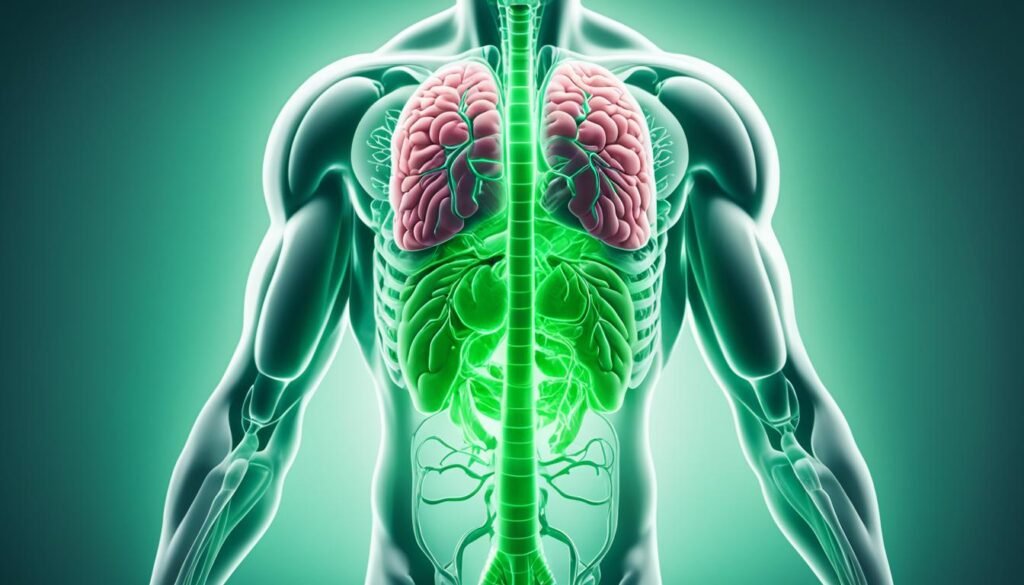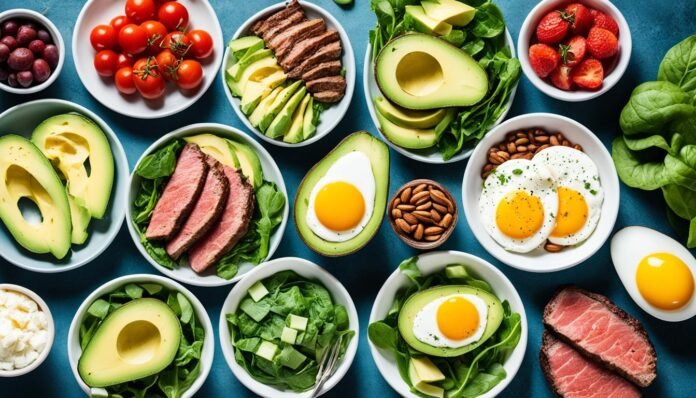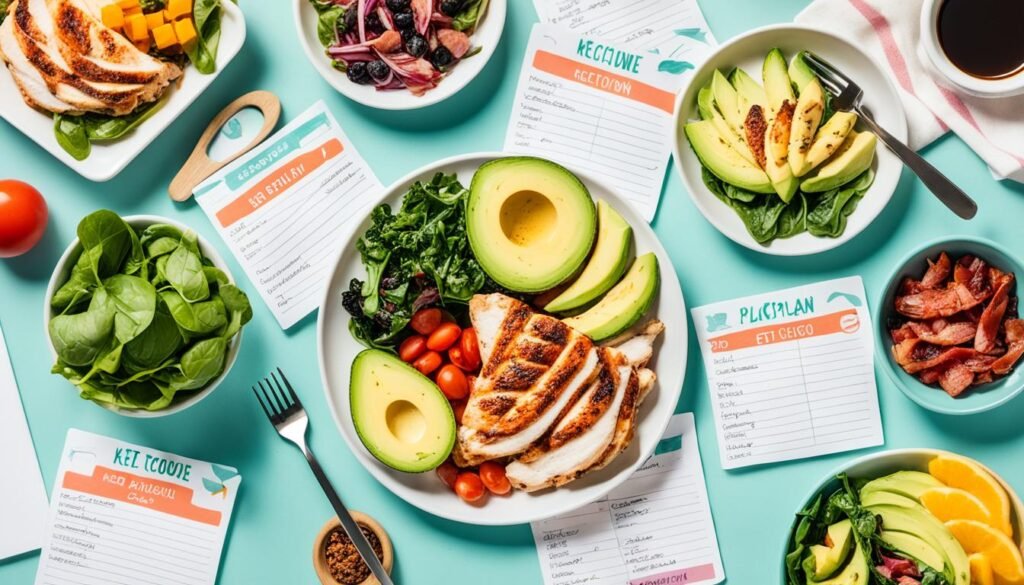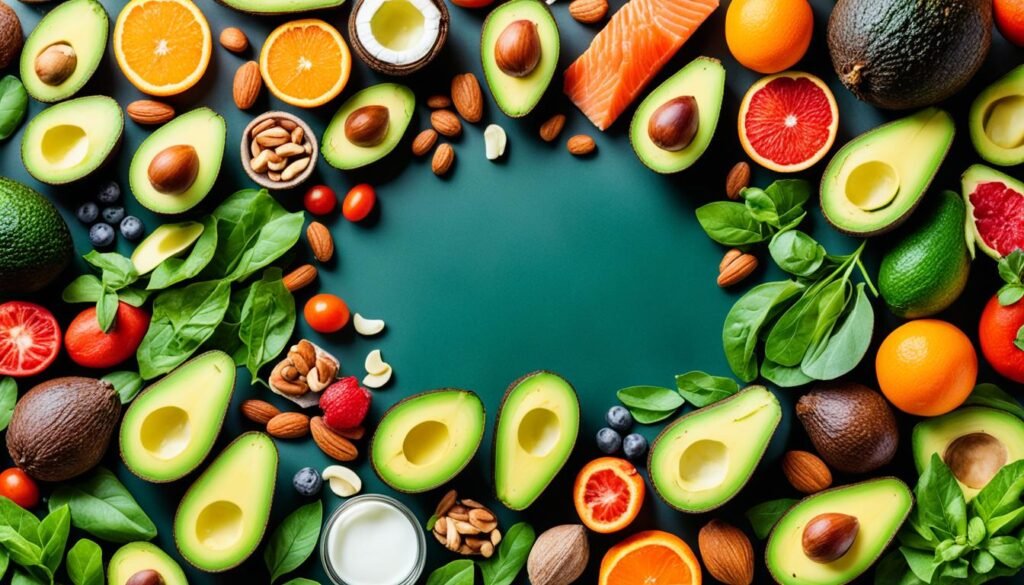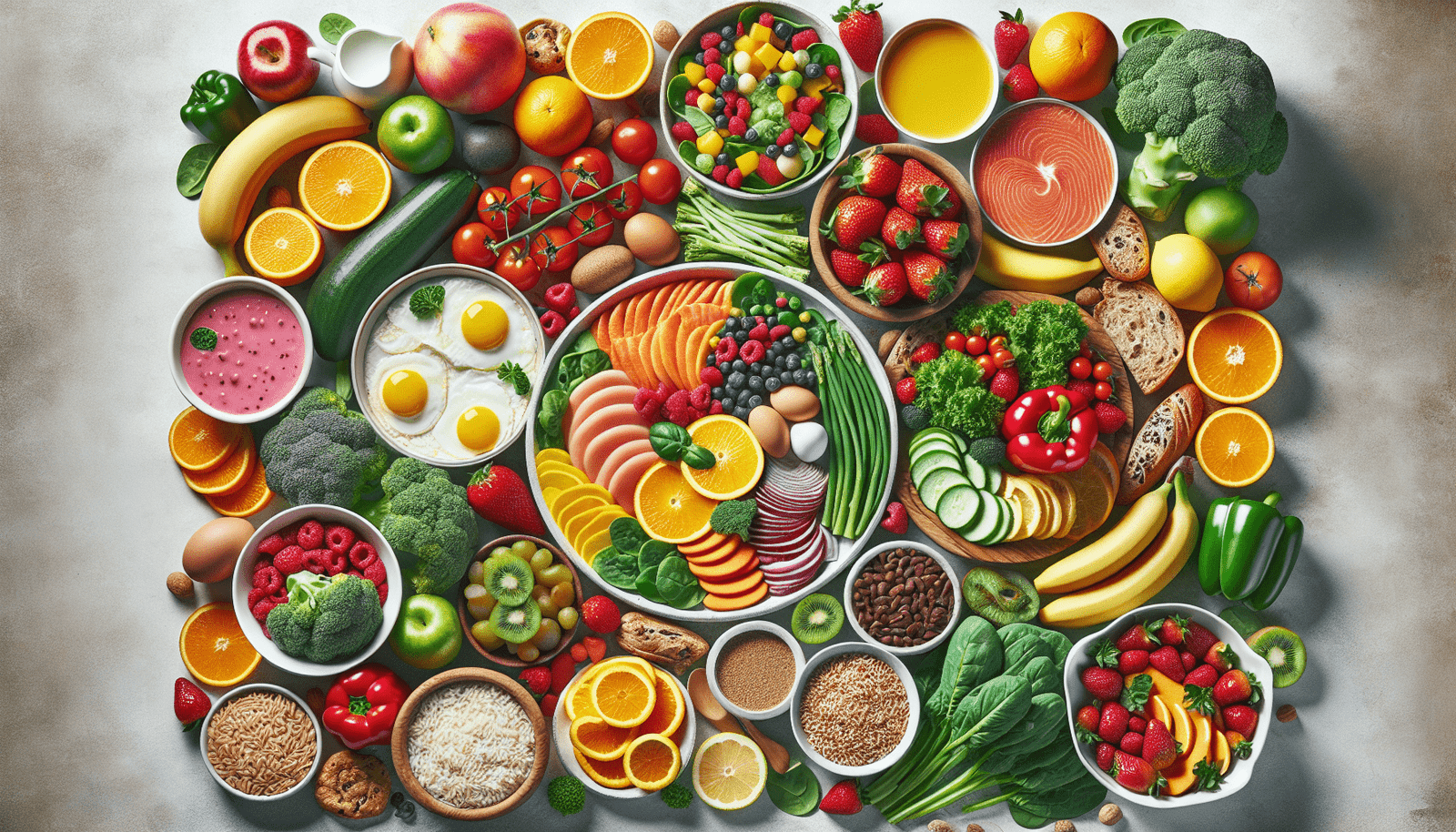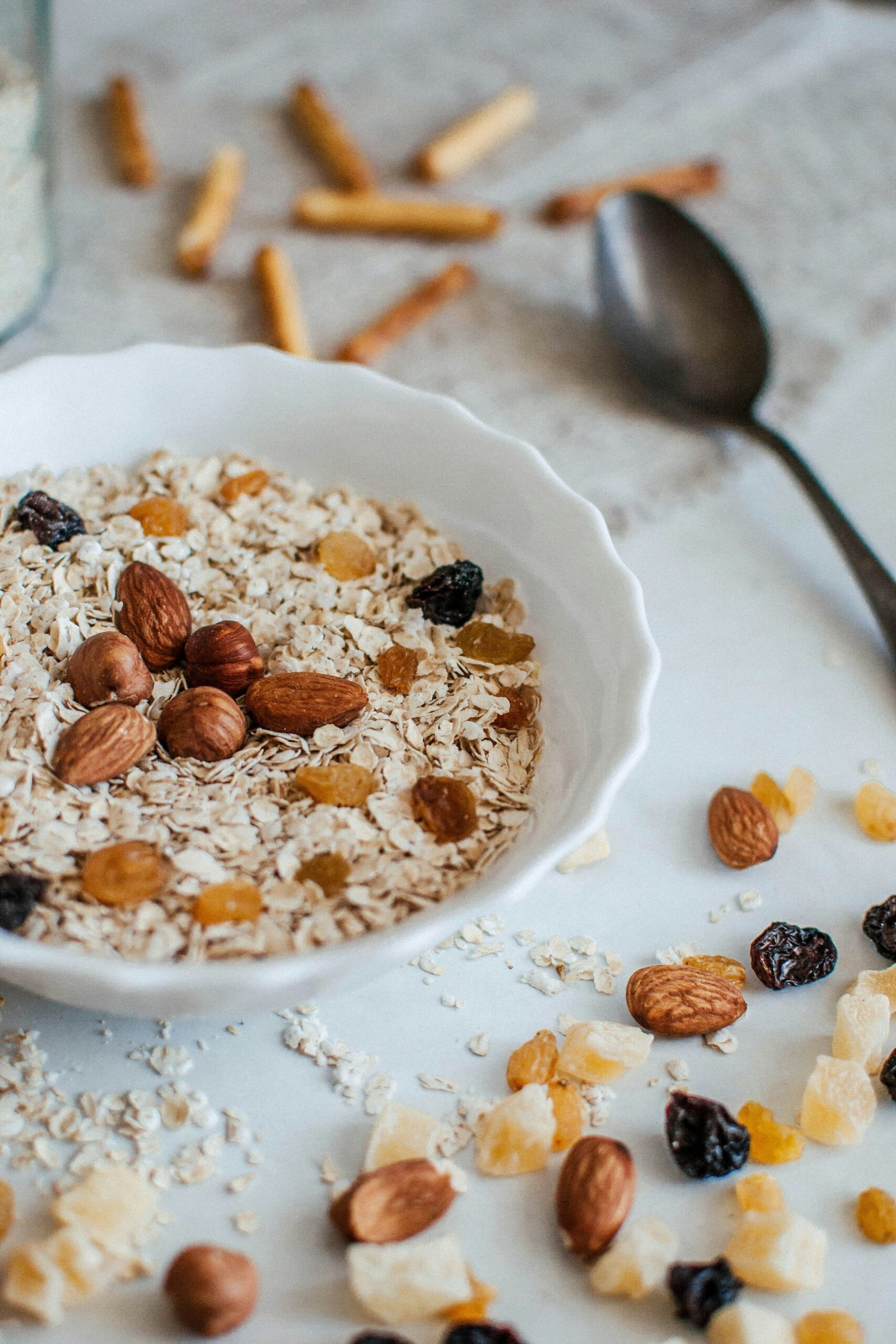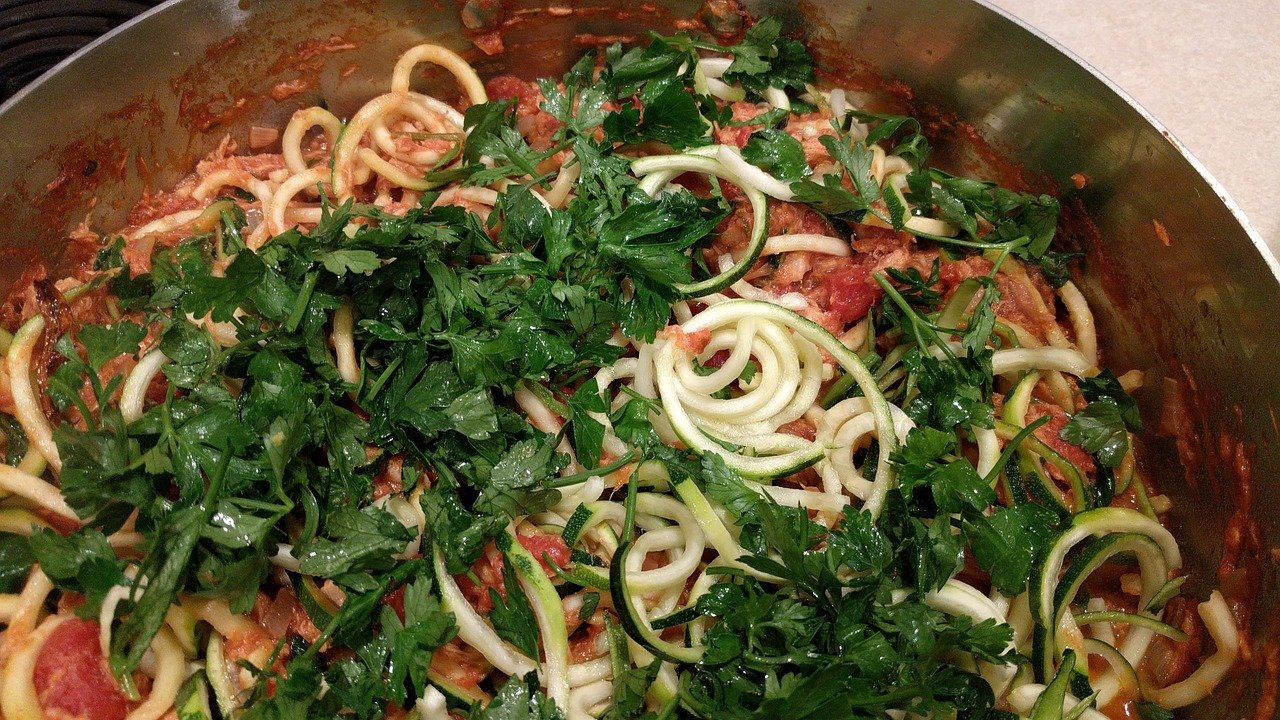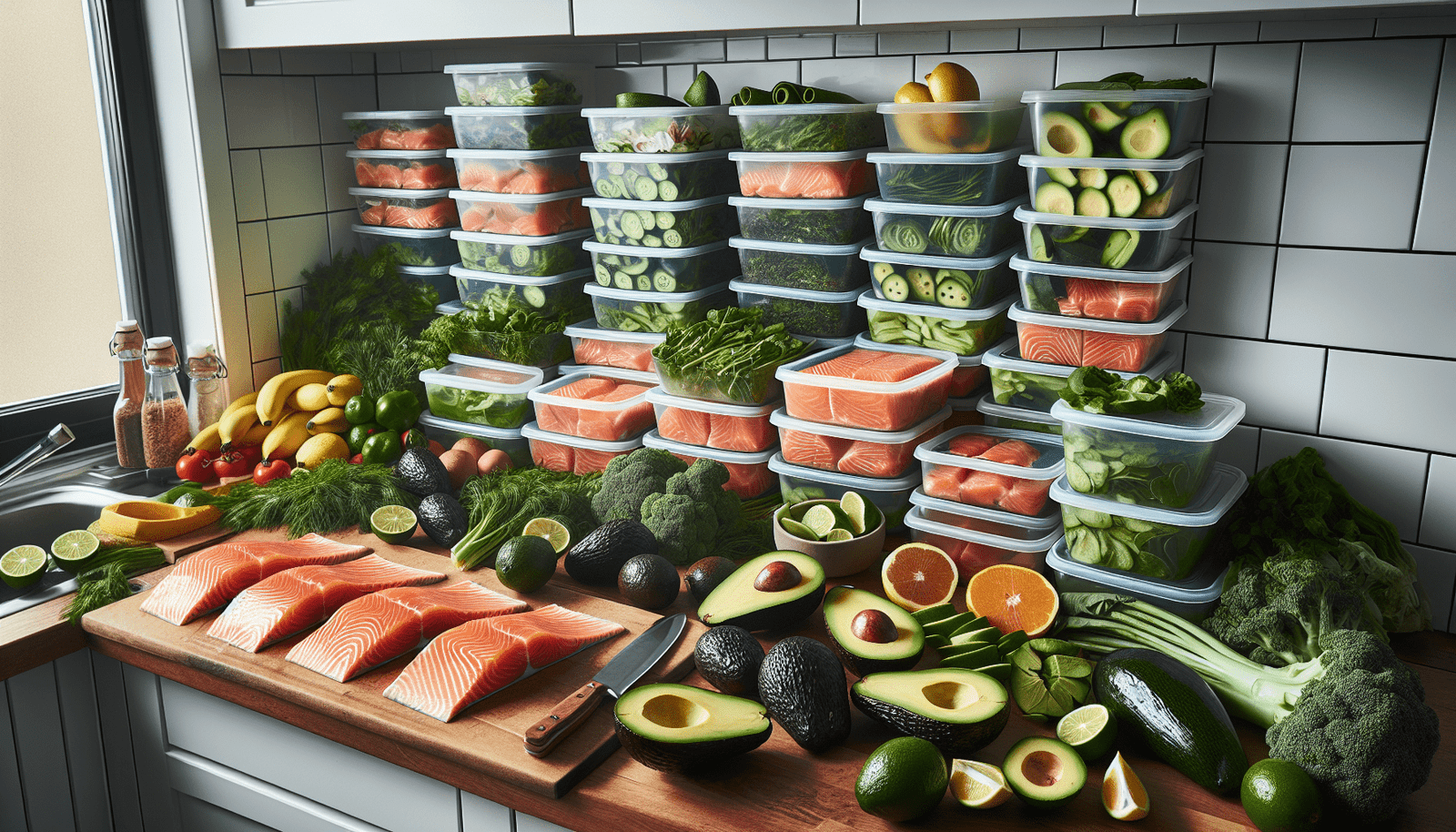The ketosis diet changes how your body uses energy. By eating more fats and fewer carbs, you enter a fat-burning state called ketosis. People like it for weight management and better health.
Books like “Keto Clarity” by Moore and Westman say the diet is good for losing weight and might improve your metabolism and mind. Research in Diabetes Therapeutics and Aging shows it could help with type 2 diabetes and make you live longer, which makes it very popular.
What is a Ketosis Diet?
A ketosis diet greatly reduces carbs to start a metabolic state called ketosis. When in ketosis, your body switches its main energy source from glucose to fat. This leads to making ketones. Many people choose this diet for its potential health perks.

Understanding Ketosis
Ketosis lies at the heart of ketogenic diets. By cutting down on carbs, your body begins to use stored fat. It turns this fat into fatty acids and ketones for energy. Being in this state boosts mental sharpness, energy levels, and overall health.
Types of Ketogenic Diets
There are different ketogenic diets to fit everyone’s needs. The major types are:
- Standard Ketogenic Diet (SKD): This standard method emphasizes a high-fat, moderate-protein, low-carb intake.
- Cyclical Ketogenic Diet (CKD): This type includes some high-carb days. This pattern is 5 ketogenic days followed by 2 high-carb days. It suits athletes or those wanting more diet flexibility.
These diet forms let people pick what works best for their health aims and lifestyle. You can aim for constant ketosis or prefer cyclic ketosis periods.
Weight Management and the Ketosis Diet
Weight management is a key advantage of the ketogenic diets. Many studies show they are more effective for losing weight than other diets. They work well because they make you less hungry, allowing you to eat less without feeling starved.

Research by Hallberg and others finds ketogenic diets very effective at controlling type 2 diabetes. This often leads to weight loss too. With many Americans struggling with being overweight, as the CDC notes, the low-carb ketosis diet offers a good solution for lasting weight control.
Ketogenic diets are great for losing weight, especially around your belly. They use fat for energy, helping you meet your weight goals and live healthier. This diet’s way of reducing hunger, along with its low-carb focus, really shows how powerful ketosis can be for shedding pounds.
| Weight Management Benefits | Details |
|---|---|
| Substantial Weight Loss | Research indicates ketogenic diets promote more significant weight loss compared to other diets. |
| Appetite Suppression | Ketosis reduces hunger, allowing for calorie reduction without significant discomfort. |
| Abdominal Fat Reduction | The diet targets fat around the abdominal region, contributing to overall health improvement. |
| Type 2 Diabetes Management | Studies demonstrate the efficacy of ketogenic diets in managing diabetes, correlating with weight reduction. |
| Sustainable Approach | A low-carb structure paves the way for a sustainable and effective weight management regimen. |
Improved Mental Clarity and Focus
The ketogenic diet is known for boosting mental clarity and brain function. It focuses on low-carb and high-fat foods. This changes how your body gets its energy, moving from glucose to ketones.
Effects on Brain Health
This energy shift does more than just energize your body. It’s great for brain health too. Studies show ketones are excellent brain fuel. They can improve focus, memory, and cognitive functions.
Studies and Findings
Research highlights the neuroprotective benefits of the ketogenic diet. It’s helpful for issues like epilepsy and Alzheimer’s disease. Ketones help keep the brain’s energy stable and lower neurodegeneration risks.
This makes the ketogenic diet a strong tool for better mental clarity. It safeguards the brain against diseases. This is key for improved cognitive health.
The Ketosis Diet and Metabolic Health
The ketogenic diet greatly improves your metabolic health. It changes how your body handles blood sugar and insulin sensitivity. This is key for handling type 2 diabetes and metabolic syndrome.
Impact on Blood Sugar Levels
The ketosis diet is great for keeping your blood sugar stable. By eating fewer carbs, your body uses fats for energy. This reduces blood sugar spikes from high-carb foods. Research shows this diet can better control blood sugar, which is good news for type 2 diabetes management.
Influence on Insulin Sensitivity
The ketogenic diet also boosts insulin sensitivity. This means your cells use insulin more effectively. Better insulin sensitivity can lower insulin resistance. This tackles a big problem in metabolic syndrome. Studies back up how the ketosis diet improves metabolic health’s major issues.
A Sustainable Approach to Healthy Living
A ketosis diet offers a sustainable approach to healthy living. It focuses on high-quality fats and proteins. It also cuts down on processed carbs. This fits modern nutritional advice to prevent chronic diseases.
Choosing a low-carb lifestyle helps with weight control. It also ensures a balanced diet rich in vital nutrients.
Many people praise it for its long-term benefits on weight and body shape. With a bit of planning, it’s easy to follow every day. This leads to lasting health benefits.
| Aspect | Ketosis Diet | Traditional Diet |
|---|---|---|
| Carbohydrate Intake | Low | High |
| Fat Intake | High | Moderate |
| Protein Intake | Moderate | Variable |
| Sustainability | High with planning | Moderate |
| Diet Composition | Whole foods, quality fats | Processed foods |
Switching to this diet can boost your health and well-being. It matches the move towards better eating habits and sustainable living.
Potential Risks and Considerations
The ketogenic diet has many benefits, but it’s important to know the risks. Being aware of short-term and long-term effects can help you decide. This info makes it easier to choose wisely.
Short-term Side Effects
Starting a ketosis diet might cause the “keto flu.” You could feel tired, have headaches, and get irritable. Your body is getting used to burning fat. Drink plenty of water and get enough electrolytes to help during this time.
Long-term Health Implications
Sticking to a ketogenic diet for a long time could be tough. It may lead to kidney stones or make your liver tired. Also, eating fewer carbs might mean you’re missing out on important nutrients.
Even with these issues, you can manage them by paying attention to your diet. Adding the right nutrients can lower the risks. It’s a good idea to talk to a doctor before you start a ketosis diet.
Conclusion
The ketosis diet is changing the game in health and wellness, fueled by solid science. It’s famous for helping with weight loss and making your mind sharper. Plus, it can make your overall health better.
But, it’s important to look at the risks too. The “keto flu,” with symptoms like tiredness and mood swings, is common at the start. To stick with it long-term, you need to watch your nutrition closely. This ensures you don’t miss out on important nutrients.
Starting a ketosis diet can make a big positive impact on your health. Choosing this low-carb path carefully helps you live a health-focused life. With the right balance and advice, the ketosis diet offers great health and energy benefits.




